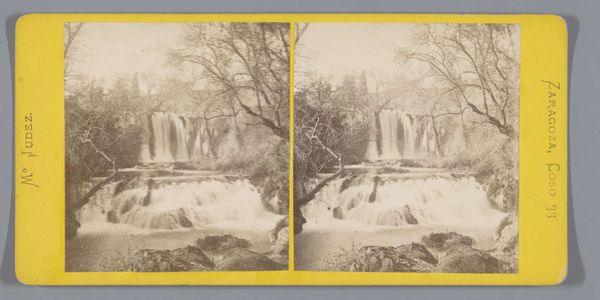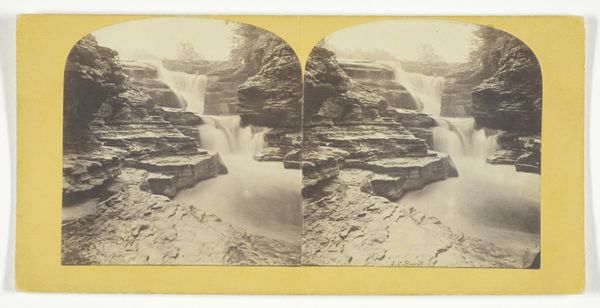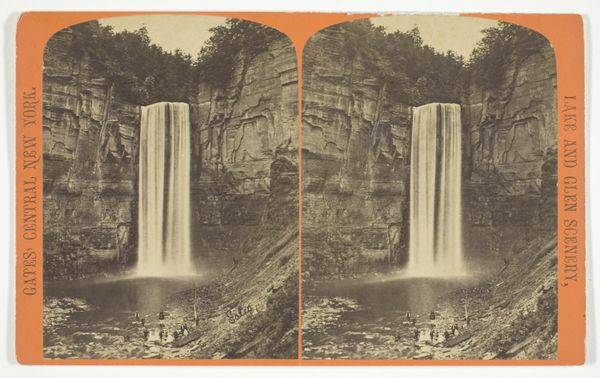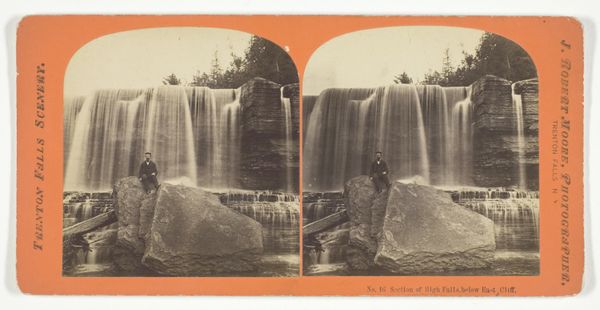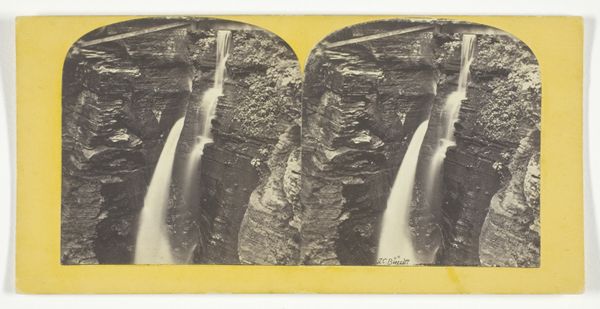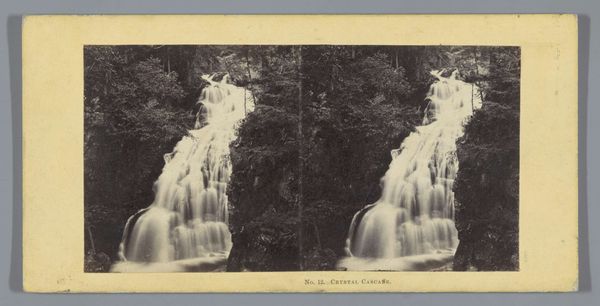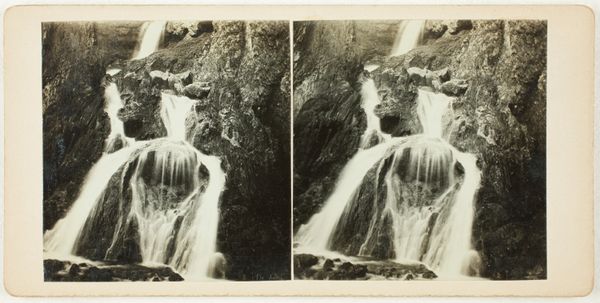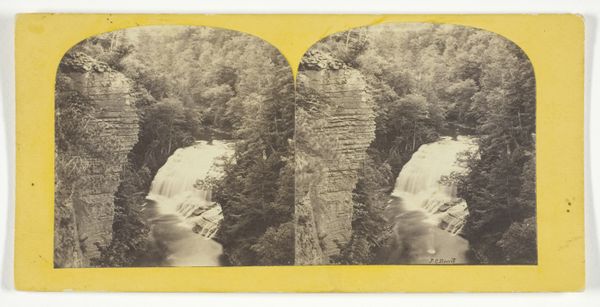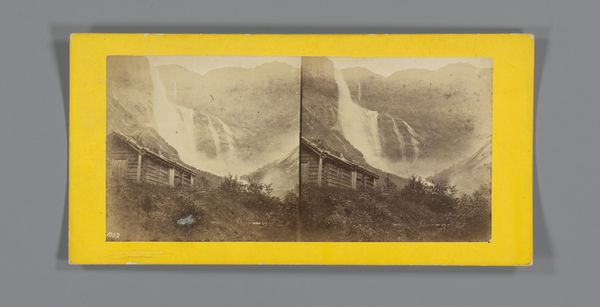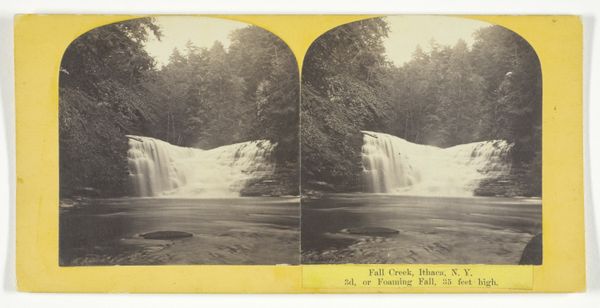
silver, print, photography, gelatin-silver-print
#
16_19th-century
#
natural formation
#
silver
# print
#
landscape
#
photography
#
gelatin-silver-print
#
united-states
Dimensions: 7.7 × 7.3 cm (each image); 8.2 × 17.1 cm (card)
Copyright: Public Domain
Curator: I am immediately struck by the composition—that central cascade almost dividing the space in two. The monochromatic rendering amplifies the contrast between the flowing water and the solid rock, imbuing it with a sense of dramatic tension. Editor: Exactly. This is a photograph called Sulah Fall, a gelatin-silver print from sometime in the mid-to-late 19th century. Consider the context: landscape photography in the U.S. was intertwined with ideas of westward expansion, Manifest Destiny, and the romantic idealization of nature. Curator: So, this image plays a role in the national narrative, doesn't it? Even the term "natural formation", that is tagged on the data set, can serve as an indicator that this is perceived as wild but ultimately "domesticable". But I can’t help thinking, looking at the picture itself, what did "wilderness" represent to those with greater proximity to urban expansion? Editor: Certainly. These images offered the viewers in the East a mediated experience of the "untamed" frontier, reinforcing particular ideas about American identity and power. It's important to examine who had access to these photographs, who profited from their distribution, and how they might have been used to promote specific political agendas. Were the actual perspectives of Native Americans, or other marginalized groups, ignored in this depiction of natural beauty? Curator: What's also intriguing is how photography itself becomes a tool of control here, reducing something as dynamic and untamable as a waterfall to a static, manageable image. Editor: Indeed, this piece shows a clear example of 19th-century social hierarchies, as its very composition relies upon cultural beliefs about progress, power, and natural resources that were designed to reinforce dominant ideologies. However, in this contemporary era, might it encourage dialogues around topics of environment and conservationism? Curator: It offers a very powerful starting point for discussion around our complicated relationship to nature and visual representation. Editor: A poignant exploration that makes us ponder the shifting dynamics between the photographic lens, socio-political ideologies, and our ever-changing landscape.
Comments
No comments
Be the first to comment and join the conversation on the ultimate creative platform.
